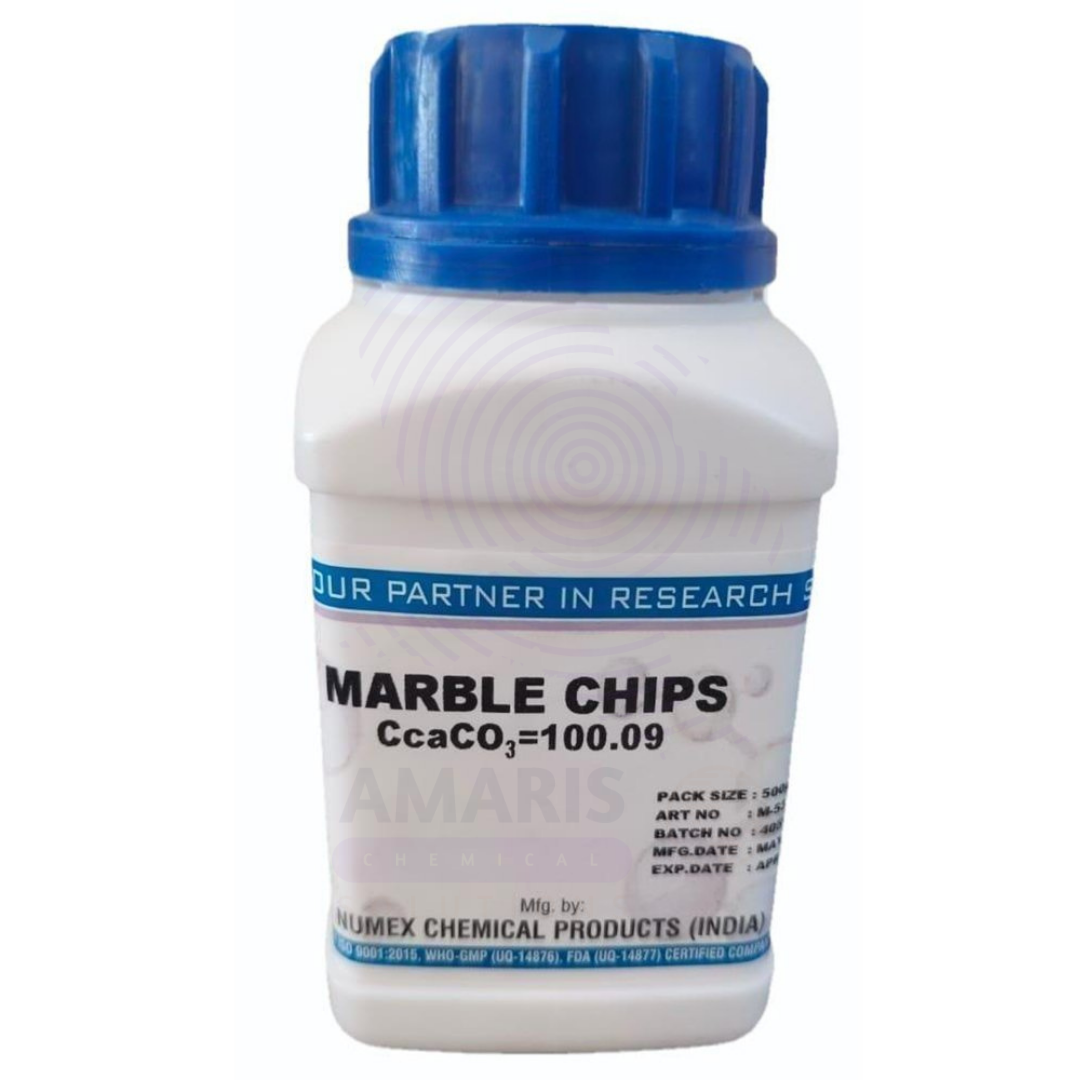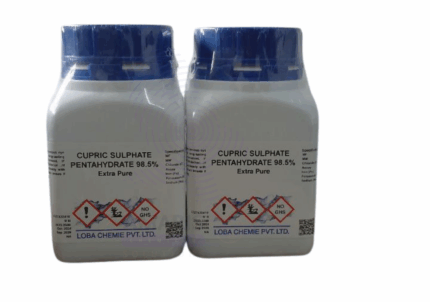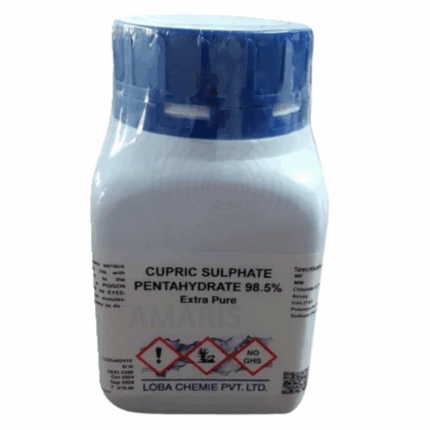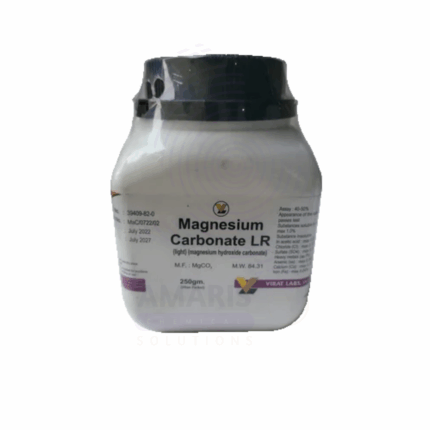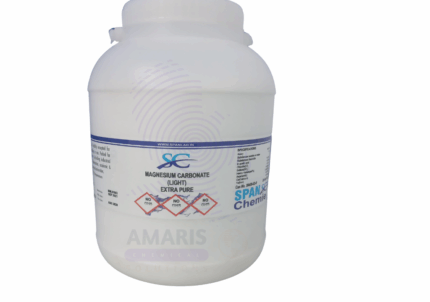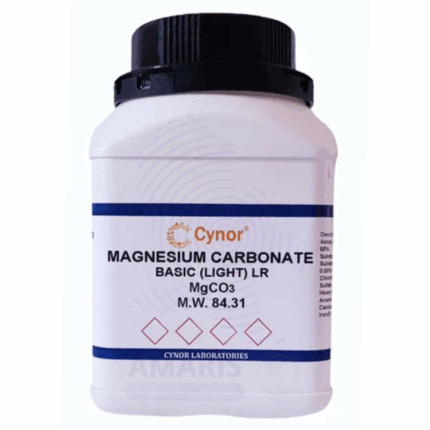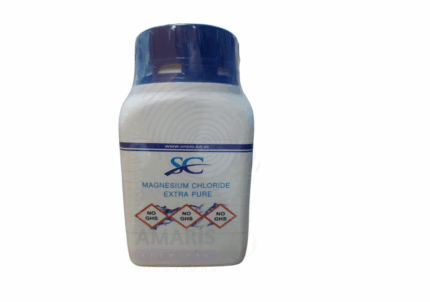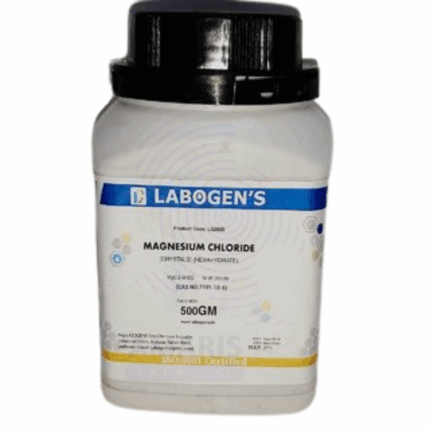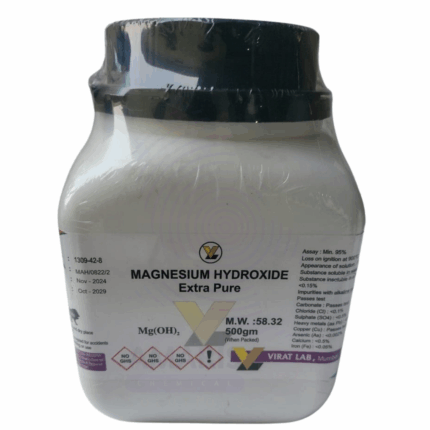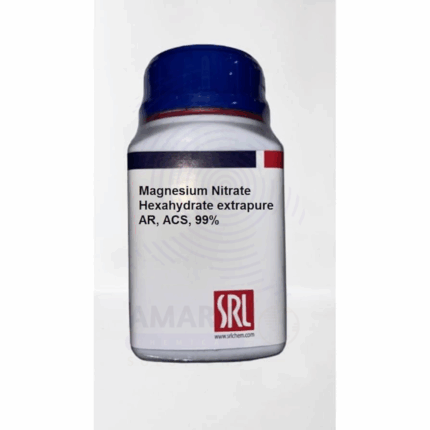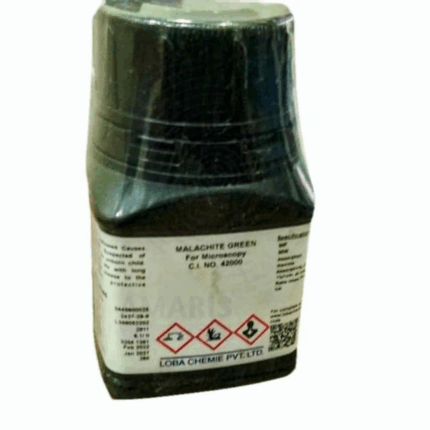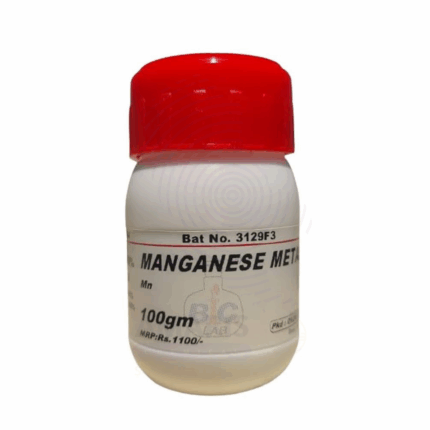

Marble Chips Extra Pure
$ 17.10 Original price was: $ 17.10.$ 16.98Current price is: $ 16.98.
Marble Chips Extra Pure are high-grade, naturally occurring calcium carbonate fragments that have been carefully processed to ensure exceptional purity. These white or off-white chips are widely used in laboratory experiments, especially in demonstrations involving acid-carbonate reactions where the release of carbon dioxide is observed. Beyond educational and research use, they also serve as a buffering agent, filtration medium, and mild abrasive in various industrial applications. Due to their chemical stability and high calcium content, marble chips are ideal for use in controlled environments where contaminants must be minimized.
Marble Chips Extra Pure
Primary Uses
- Source of Calcium Carbonate in Acid Reactions:
- Commonly used to demonstrate the reaction of calcium carbonate (CaCO₃) with acids (e.g., hydrochloric acid) to produce carbon dioxide gas, water, and calcium salt.
- Gas Generation in Experiments:
- Frequently used in school and lab setups to generate CO₂ in a controlled reaction setup.
Secondary Uses
- Buffering Agent:
- Acts as a mild base to neutralize acids or maintain pH in some chemical or biological reactions.
- Demonstration of Carbonate Reactions:
- Ideal for visual and practical demonstrations in chemical education (e.g., limestone cycle, acid rain effects).
- Gravimetric Analysis:
- Occasionally used in mass-based calculations to determine the quantity of acid consumed or gas evolved.
| PACK SIZE |
500 grams Plastic Tin |
|---|
1. Basic Identification Attributes
- Chemical Name: Calcium Carbonate (natural, as marble chips)
- Common Name: Marble Chips
- CAS Number: 471-34-1
- Molecular Formula: CaCO₃
- Molecular Weight: 100.09 g/mol
- Appearance: White to off-white irregular solid chips
- Odor: Odorless
- Grade: Extra Pure
- Solubility: Insoluble in water; reacts with acids to release CO₂ gas
2. Safety & Hazard Attributes
- GHS Classification:
- Not classified as hazardous under normal laboratory conditions
- Hazard Statements:
- Generally considered non-hazardous in solid form
- May cause mechanical eye or respiratory irritation if dust is generated
- Precautionary Statements:
- P261: Avoid breathing dust
- P280: Wear protective gloves/eye protection
- P305+P351+P338: IF IN EYES: Rinse cautiously with water
- P402+P404: Store in a dry place. Keep container closed
- Personal Protective Equipment (PPE):
- Dust mask or respirator (if dusty)
- Safety goggles
- Gloves
- Lab coat
- First Aid Measures:
- Inhalation: Move to fresh air if dust is inhaled
- Skin Contact: Wash with water
- Eye Contact: Rinse with clean water for several minutes
- Ingestion: Rinse mouth with water; not considered toxic in small quantities
- Fire Hazards:
- Non-flammable
- Not combustible; use standard fire-fighting measures if involved in fire
3. Storage & Handling Attributes
- Storage Conditions:
- Store in a cool, dry, well-ventilated area
- Keep container tightly closed
- Protect from moisture and acids
- Handling Tips:
- Avoid generating dust
- Do not breathe particles
- Clean spills with minimal dust dispersal
4. Laboratory Applications
- Primary Uses:
- Neutralization agent for acids in experiments
- Source of CO₂ gas in acid-carbonate reaction demonstrations
- Teaching aid in geology and chemistry practicals
- Secondary Uses:
- Buffering agent in soil science and environmental studies
- Mild abrasive in polishing experiments or mixtures
- Calcium supplement for biological experiments
SAFETY PRECAUTIONS
Personal Protective Equipment (PPE):
- Wear a lab coat, nitrile gloves, and safety goggles.
- Use a dust mask or ensure adequate ventilation when handling powdered or chipped material.
Handling:
- Avoid inhalation of dust and contact with eyes or skin.
- Handle with care to prevent dust generation.
- Wash thoroughly after handling.
Storage:
- Store in a cool, dry, and well-ventilated area.
- Keep the container tightly closed.
- Avoid contact with acids, as it can release carbon dioxide gas.
FIRST AID MEASURES
Inhalation:
- Move to fresh air.
- Seek medical attention if irritation or breathing difficulty occurs.
Skin Contact:
- Wash skin with soap and water.
- Seek medical advice if irritation develops.
Eye Contact:
- Rinse cautiously with clean water for several minutes.
- Remove contact lenses if present and easy to do.
- Seek medical help if irritation continues.
Ingestion:
- Rinse mouth with water.
- Seek medical attention if discomfort or symptoms develop.
FIRE FIGHTING MEASURES
Flammability:
- Non-flammable.
- Not considered a fire hazard.
Extinguishing Media:
- Use any standard extinguishing media suitable for surrounding fire.
Hazardous Combustion Products:
- May release carbon dioxide (CO₂) if reacting with acids during a fire.
Firefighter Protection:
- Use standard protective gear and SCBA if involved with contaminated fire environments.


 Preservatives(food)
Preservatives(food) Flavor Enhancers
Flavor Enhancers Acidulants
Acidulants Sweeteners
Sweeteners Antioxidants
Antioxidants Colorants(food)
Colorants(food) Nutraceutical Ingredients (food)
Nutraceutical Ingredients (food) Nutrient Supplements
Nutrient Supplements Emulsifiers
Emulsifiers
 Collectors
Collectors Dust Suppressants
Dust Suppressants Explosives and Blasting Agents
Explosives and Blasting Agents Flocculants and Coagulants
Flocculants and Coagulants Frothers
Frothers Leaching Agents
Leaching Agents pH Modifiers
pH Modifiers Precious Metal Extraction Agents
Precious Metal Extraction Agents
 Antioxidants(plastic)
Antioxidants(plastic) Colorants (Pigments, Dyes)
Colorants (Pigments, Dyes) Fillers and Reinforcements
Fillers and Reinforcements Flame Retardants
Flame Retardants Monomers
Monomers Plasticizers
Plasticizers Polymerization Initiators
Polymerization Initiators Stabilizers (UV, Heat)
Stabilizers (UV, Heat)
 Antifoaming Agents
Antifoaming Agents Chelating Agents
Chelating Agents Coagulants and Flocculants
Coagulants and Flocculants Corrosion Inhibitors
Corrosion Inhibitors Disinfectants and Biocides
Disinfectants and Biocides Oxidizing Agents
Oxidizing Agents pH Adjusters
pH Adjusters Scale Inhibitors( water)
Scale Inhibitors( water)
 Antioxidants(cosmetic)
Antioxidants(cosmetic) Emollients
Emollients Fragrances and Essential Oils
Fragrances and Essential Oils Humectants
Humectants Preservatives
Preservatives Surfactants(cosmetic)
Surfactants(cosmetic) Thickeners
Thickeners UV Filters
UV Filters
 Fertilizers
Fertilizers Soil Conditioners
Soil Conditioners Plant Growth Regulators
Plant Growth Regulators Animal Feed Additives
Animal Feed Additives Biostimulants
Biostimulants Pesticides (Herbicides, Insecticides, Fungicides)
Pesticides (Herbicides, Insecticides, Fungicides)
 Active Pharmaceutical Ingredients (APIs)
Active Pharmaceutical Ingredients (APIs) Excipients
Excipients Solvents(pharmaceutical)
Solvents(pharmaceutical) Antibiotics
Antibiotics Antiseptics and Disinfectants
Antiseptics and Disinfectants Vaccine Adjuvants
Vaccine Adjuvants Nutraceutical Ingredients (pharmaceutical)
Nutraceutical Ingredients (pharmaceutical) Analgesics & Antipyretics
Analgesics & Antipyretics
 Analytical Reagents
Analytical Reagents Solvents(lab)
Solvents(lab) Chromatography Chemicals
Chromatography Chemicals Spectroscopy Reagents
Spectroscopy Reagents microbiology-and-cell-culture-reagents
microbiology-and-cell-culture-reagents Molecular Biology Reagents
Molecular Biology Reagents Biochemical Reagents
Biochemical Reagents Inorganic and Organic Standards
Inorganic and Organic Standards Laboratory Safety Chemicals
Laboratory Safety Chemicals Specialty Laboratory Chemicals(Special Laboratory Equipment)
Specialty Laboratory Chemicals(Special Laboratory Equipment)
 Demulsifiers
Demulsifiers Hydraulic Fracturing Fluids
Hydraulic Fracturing Fluids Scale Inhibitors(oil)
Scale Inhibitors(oil) Surfactants(oil)
Surfactants(oil) Drilling Fluids
Drilling Fluids
 Dyes and Pigments
Dyes and Pigments Bleaching Agents
Bleaching Agents Softening Agents
Softening Agents Finishing Agents
Finishing Agents Antistatic Agents
Antistatic Agents
 Admixtures
Admixtures Waterproofing Agents
Waterproofing Agents Sealants and Adhesives
Sealants and Adhesives Curing Compounds
Curing Compounds Concrete Repair Chemicals
Concrete Repair Chemicals Anti-Corrosion Coatings
Anti-Corrosion Coatings
 Surfactants(cleaning)
Surfactants(cleaning) Builders
Builders Enzymes
Enzymes Solvents (Cleaning)
Solvents (Cleaning) Fragrances
Fragrances
 Electronic Chemicals
Electronic Chemicals Catalysts
Catalysts Lubricants
Lubricants Photographic Chemicals
Photographic Chemicals Refrigerants
Refrigerants Automotive chemicals
Automotive chemicals Pyrotechnic Chemicals
Pyrotechnic Chemicals
 Biodegradable Surfactants
Biodegradable Surfactants Bio-based Solvents
Bio-based Solvents Renewable Polymers
Renewable Polymers Carbon Capture Chemicals
Carbon Capture Chemicals Wastewater Treatment Chemicals
Wastewater Treatment Chemicals
 Pigments
Pigments Solvents(paint)
Solvents(paint) Specialty Coatings
Specialty Coatings Binders/Resins
Binders/Resins Additives
Additives Driers
Driers Anti-Corrosion Agents
Anti-Corrosion Agents Functional Coatings
Functional Coatings Application-Specific Coatings
Application-Specific Coatings
 Fresh Herbs
Fresh Herbs Ground Spices
Ground Spices Whole Spices
Whole Spices Spice Blends
Spice Blends Dried Herbs
Dried Herbs
 Leavening Agents
Leavening Agents Dough Conditioners
Dough Conditioners Flour Treatments
Flour Treatments Fat Replacers
Fat Replacers Decoratives
Decoratives Preservatives(baking)
Preservatives(baking)
 Plasticizers & Softeners
Plasticizers & Softeners Reinforcing Agents
Reinforcing Agents Adhesion Promoters
Adhesion Promoters Vulcanizing Agents
Vulcanizing Agents Antidegradants
Antidegradants Blowing Agents
Blowing Agents Fillers & Extenders
Fillers & Extenders Accelerators & Retarders
Accelerators & Retarders